
Learn all about psso (pass the slipped stitch over), a technique that can be used for binding off, decreasing, lace knitting and more.
Knitting patterns can sometimes read like a foreign language. I certainly felt that way when I read “psso” for the first time! But psso is a simple technique once you learn it. In fact, it’s possible you already used it and didn’t even realize it.
Psso means “pass the slipped stitch over.” This technique is most commonly part of a decrease in lace knitting. You’ll sometimes see it in combination with instructions such as “sl 1, k2tog, psso.” But it’s also the same technique you use when binding off. If you’ve ever completed a basic bind off, you already know how to psso!
Don’t get caught up by unfamiliar abbreviations! Download the free guide to common knitting terms so you can read any pattern with ease.
Let’s take a closer look at psso:

Take a look at the Camila Flower Petal Shawl in the photo above and you’ll see two sets of psso pictured in this shawl. The psso is running up the center of each wedge of the shawl, where the wedges come to their lowest point. Notice how the stitch is leaning over and hugging the other stitches every other row. You can see how that’s not only helpful for decreasing stitches, but it’s also quite pretty.
How to psso
Most of the time, psso is used in combination with other actions to decrease stitches. For example, the pattern might ask you to “slip 1, knit2tog, psso.” This means that you’ll slip one stitch, knit the next two stitches together, then pass the slipped stitch over top of the stitches you knit together. This decreases two stitches at one time and creates a decrease that leans to the left. Let’s break that down:
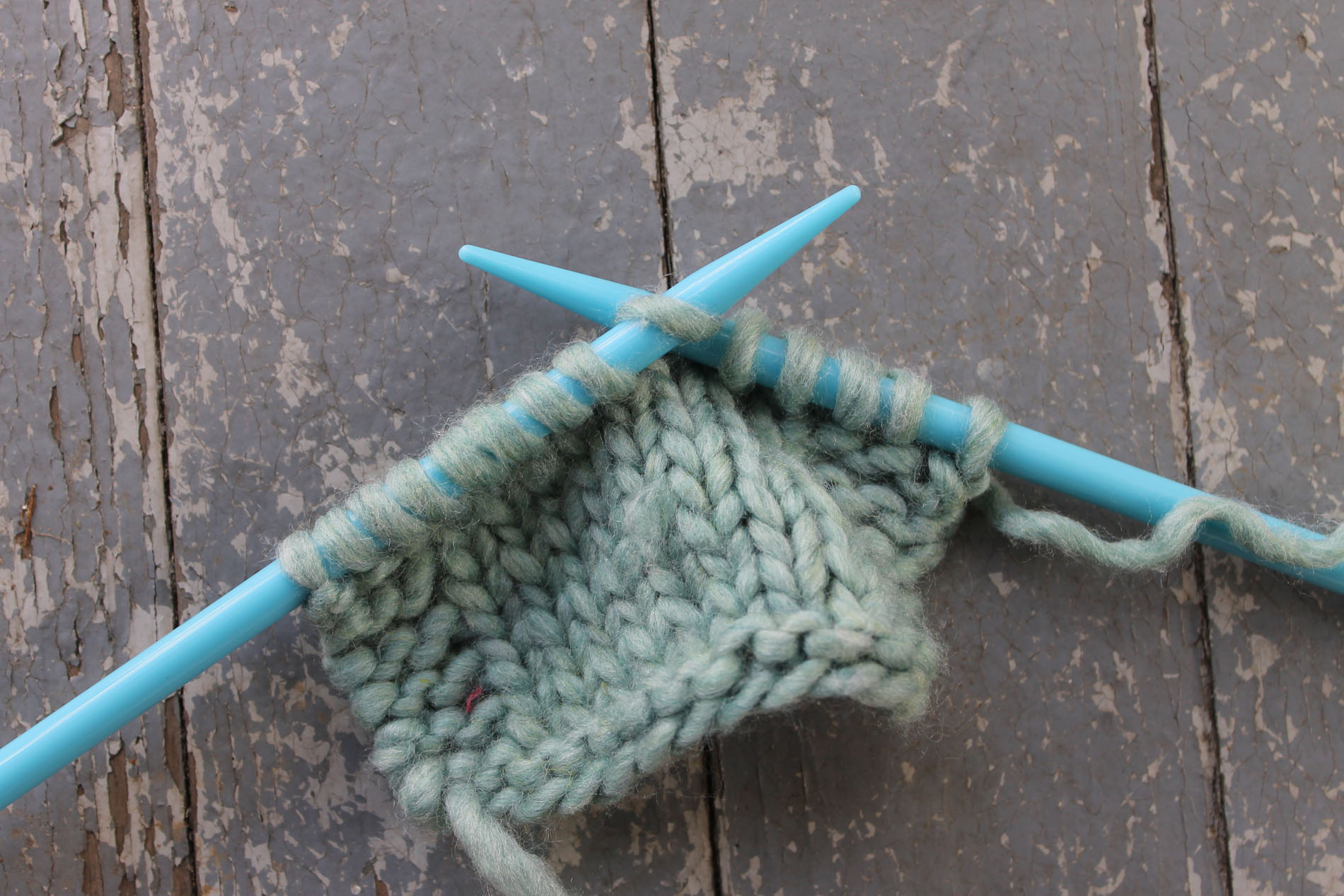
1. Slip the stitch by inserting the right needle into the stitch as if you’re going to knit it. (This is called slipping knitwise.) But instead of knitting it, just move it on over to that right-hand needle.
Tip: The pattern may ask you to slip the stitch purlwise instead of knitwise. If that’s the case, just insert the right needle into the stitch as if you’re going to purl it. Instead of purling, simply slip the stitch over to the right needle.

Take a look at the back of your work after slipping a stitch and you’ll see that the working yarn is still coming from the last stitch that was knit, rather than from the slipped stitch. That’s because the slipped stitch didn’t interact with the working yarn at all; it was just moved from one needle to the other.

2. Knit the next two stitches together. (See our tutorial on how to knit two together if you need help here.) Now, the stitches you knit together are the last stitch on the right needle, with the stitch slipped just to the right of it.
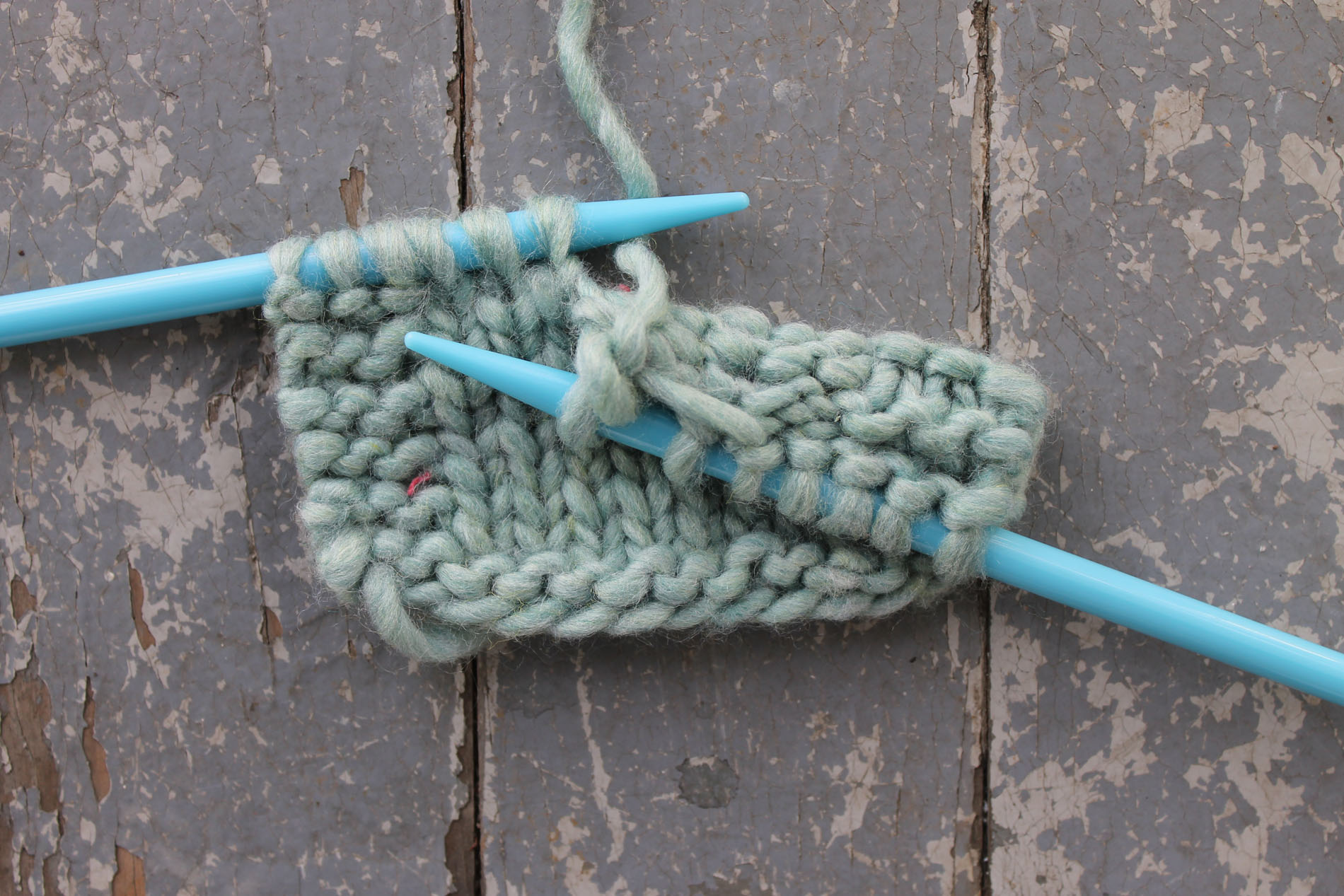
If you take a look at the back of your work now, you’ll see that the working yarn stretched across the slipped stitch to knit the next two stitches together. You’ll see a little bar that is floating behind that slipped stitch.
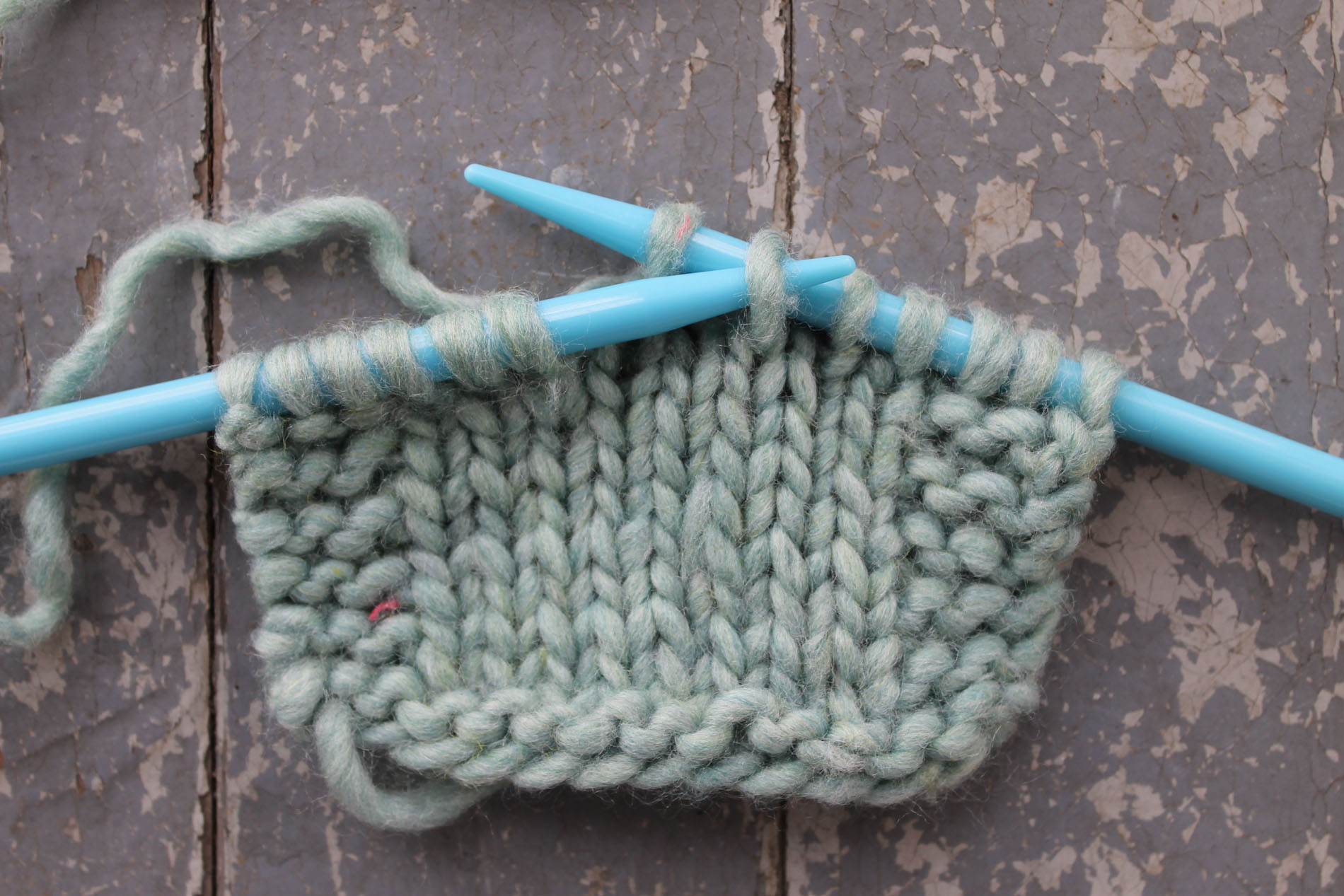
3. Now for the actual psso! Insert the left needle from left to right into the stitch that you slipped.
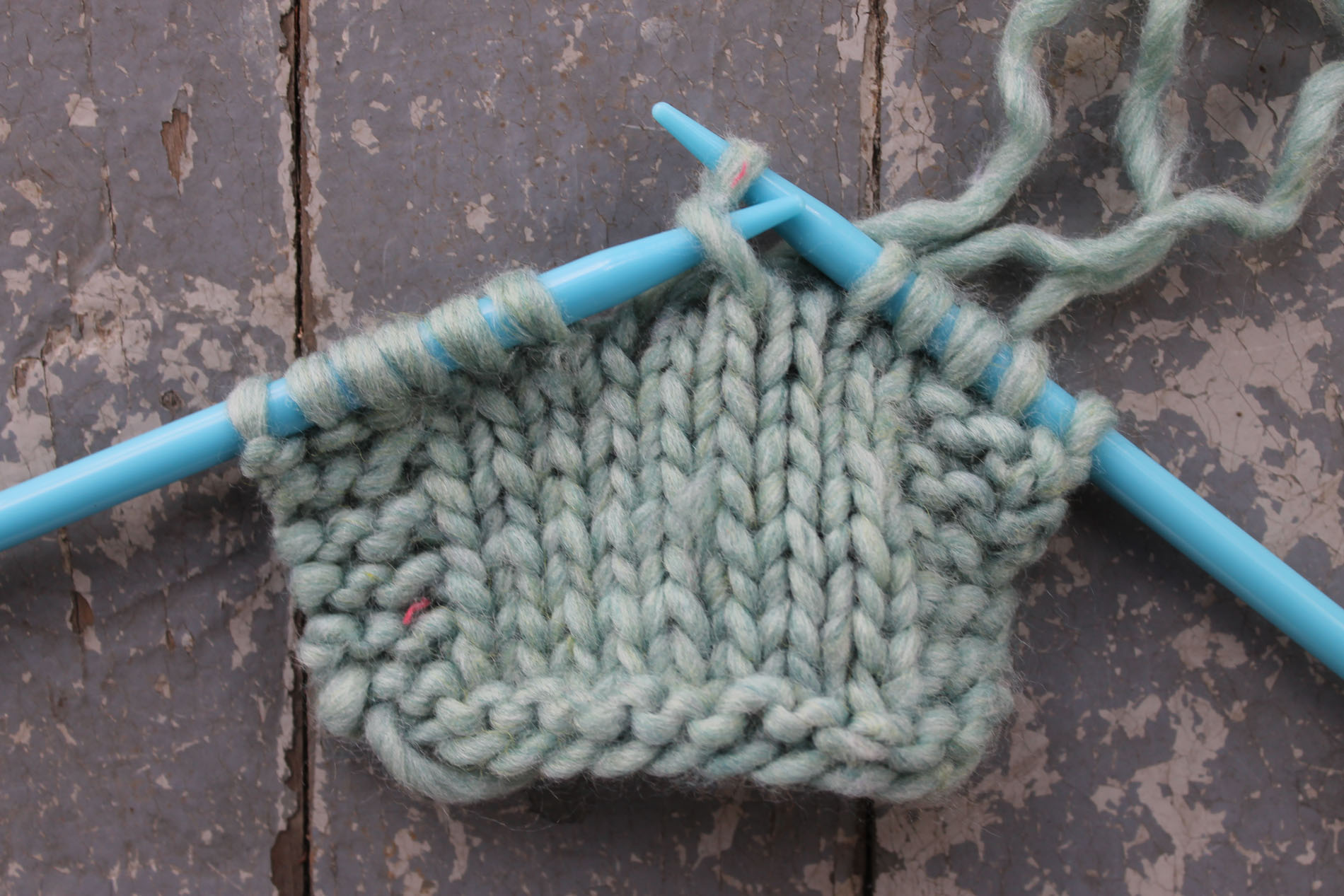
Pick up the stitch with your left needle and carefully lift it over top of the stitch to its left.

Drop the stitch from the left needle. Now you’ll see that slipped stitch laying on its side, slanted to the left.
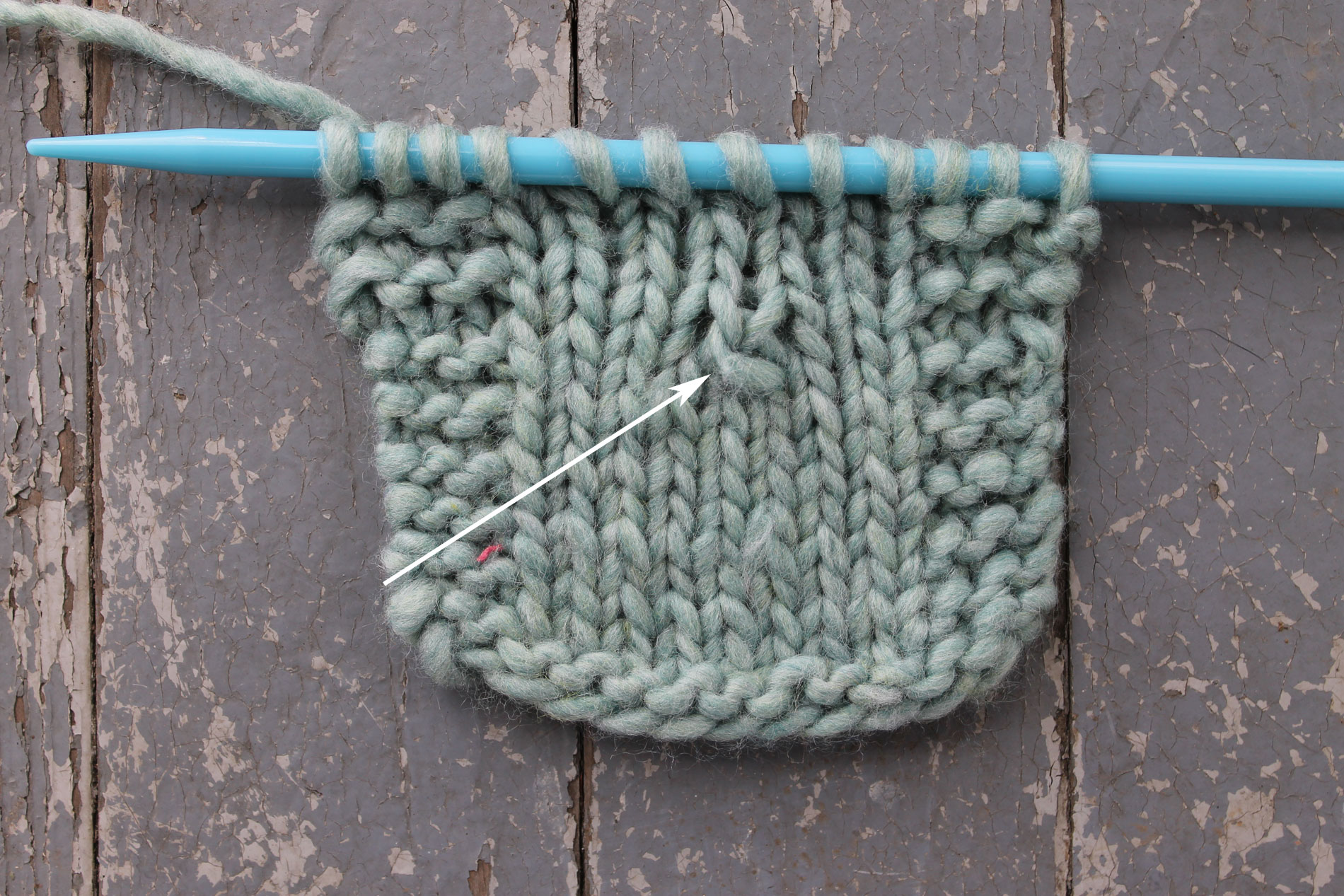
Check out the photo above to see what the psso looks like in the middle of the swatch. You’ll see the stitch just leans to the left a little as if it’s laying on its side. This may look unimpressive here in the middle of a stockinette swatch, but it looks lovely when it’s combined with other stitches, as you saw in the purple shawl.
If you’re ready to give psso a try but are feeling a little uneasy, we have the perfect solution: My First Lace Shawl with Anna Dalvi. Anna walks students through everything from reading a chart to working across the rows. You’ll get plenty of practice with psso, as well as other lace knitting stitches like the yarn over.
Thank you so much, hopefully I can exhale now! trying my hand at four needle socks.
Thanks —had done this stitch quite awhile ago but couldn’t remember how.
THANK YOU, this was a massive help to me. Golden👍😌
I need all the help I can get Thank You